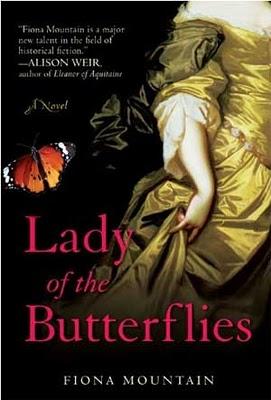Lady of the Butterflies

One reason I gravitate towards historical fiction is that I enjoy discovering individuals in history whom I normally wouldn’t learn about on my own. Eleanor Glanville was a seventeenth century English entomologist from Somerset. Her specialty was butterflies and some of her collections still live in the Natural History Museum today. Though Glanville’s work is several centuries old, Fiona Mountain brings Glanville’s contributions and character to life in Lady of the Butterflies.
As a child, Glanville grew up under the strict guidance of her Puritan father who forbade her to participate in Christmas or other Catholic celebrations. At the same time, this father also encouraged her to embrace and understand her environment at Tickenham Court, which was located in the middle of a moor. Eleanor’s passionate interest in insects, specifically butterflies, started at a young age but was seen as abnormal behavior among her neighbors and servants. In the late seventeenth century, education for women was not encouraged or looked upon kindly.
In her early twenties, Eleanor married Edmund Ashfield whom she loved dearly, and bore him two children. However, she had a rather unhealthy desire and longing for his closest friend, Richard Glanville, who was a dashing but extremely moody young man. There are sections of the book that are reminiscent of a romance novel, especially in the descriptions of Eleanor and Richard’s interactions. Fiona Mountain wants the reader to know that this was a fiercely passionate woman whether it be toward the men she loved, her butterflies, or her children.
What I found the most interesting about Glanville was her love of nature and learning and her ability to win the respect and admiration of male scientists, young and old. Many naturalists of that time were interested in her quest to understand the metamorphism of the butterfly and were quick to support her discoveries.
While reading this book, there was always a touch of apprehension. Glanville was sometimes on the edge of danger because many of her neighbors, servants, and acquaintances accused her of being insane. After all, what self-respecting woman would run chasing butterflies with her hair down when she had responsibilities at home? This was also during the period of the witch hunts, in which a woman caught interacting with nature might likely be accused of cavorting with the devil.
Lady of the Butterflies was an illuminating read about a fascinating woman. The Glanville Fritillary butterfly was named after Glanville, and I must admit that I have developed a renewed interest in those painted winged beauties.